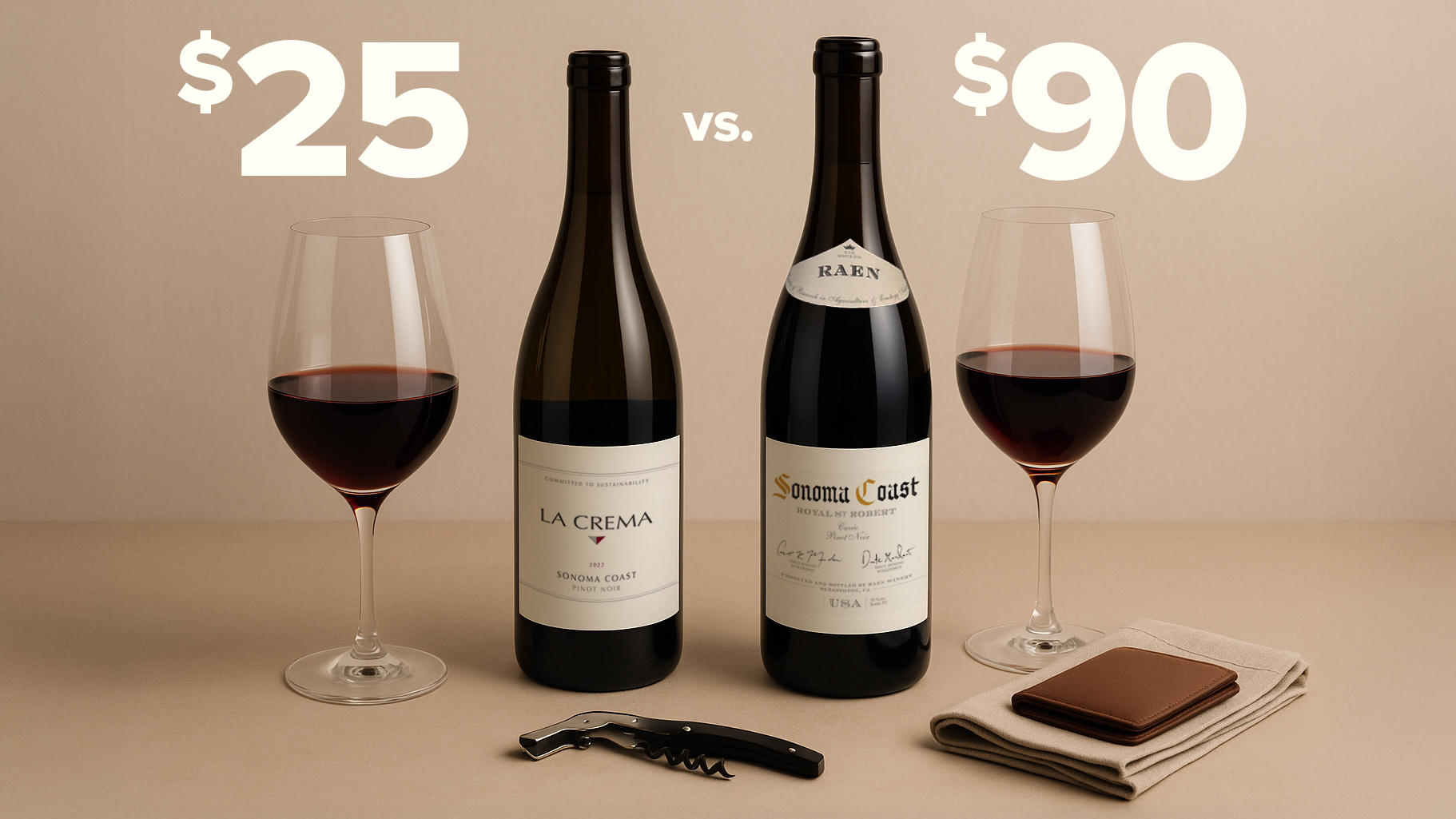

The Price of a Bottle: What You’re Really Paying For
You’ve probably stared at a wine shelf and wondered, Why is this bottle $80 and that one $18? Maybe you’ve splurged on something “nice,” only to feel let down. The more you try to spend wisely, the harder it gets to know what’s worth the price—and what’s just expensive marketing. Without a clear way to compare, it’s easy to overpay and second-guess your choices. But once you understand what really drives wine prices, you can buy with confidence and find bottles that overdeliver.
Let’s break it down.
What you’ll learn today
- What you’re actually paying for in a bottle
- When higher prices reflect real quality
- How to find great wine without overspending
What Makes One Bottle Cost More Than Another
Some wines are expensive because they’re expensive to make. Here’s a breakdown:
First, grape growing. It’s cheaper to machine-harvest grapes from large, flat vineyards. But many high-quality wines come from steep hillsides where grapes are hand-picked. These low-yield vineyards produce fewer grapes, but they’re often more flavorful and complex.
Then there’s winemaking. Oak barrels add flavor and structure—but cost hundreds of dollars each. Aging a wine in barrel or bottle takes up space and delays when the wine can be sold. That time and care raises the price. Some winemakers also use native yeast, hand-sorting, or extended maceration—all of which require more skill and labor.
Packaging plays a role, too. Thick glass bottles, custom corks, and foil capsules all cost more than basic materials. If a wine feels fancy in your hand, you’re probably paying for the experience.
So yes, some wines cost more because they’re made with more intention, more labor, and more expense. But that’s only part of the story.
The Hidden Costs That Don’t Improve the Wine
Not all price increases reflect better wine. Some are built into the system.
Big-name or cult wineries can charge more just because they’re well known. You’re paying for the brand, not the glass. When critics or magazines hype a wine, the price can double overnight—without the wine changing at all.
Distribution adds more cost. Importers, distributors, and retailers all take a cut. A wine that costs $4 to produce may show up on a store shelf for $20. In restaurants, markups are even higher—often 2 to 4 times retail.
Small producers also face pricing pressure. They can’t spread costs over millions of bottles like big companies can. So even if their wine is made with care, the small scale pushes the price up.
The result? Two wines that taste equally good might have very different prices. One might carry hidden costs like marketing or overhead, while the other is just more efficient. That’s why knowing what you’re paying for helps you find better value.
When Expensive Does Mean Better
Let’s be honest: you can often taste the difference between a $10 bottle and a $30 one. At the low end, price jumps usually mean better grapes, more skilled winemaking, and more balanced wine. You’ll notice cleaner fruit, fewer harsh edges, and more structure.
But once you cross the $50–$60 range, the returns slow down. At that point, you’re often paying for scarcity, prestige, or aging potential—not just taste. A $100 bottle might be excellent, but is it five times better than a $20 one? Usually not.
So what should you pay for? Look for signs of quality in the glass: balance, length, intensity, and complexity (BLIC). Balance means no one part sticks out—acid, alcohol, tannin, and fruit all work together. Complexity means the wine changes as you taste it. Length means the flavors stay with you.
If a wine gives you all three, it’s probably worth more. But if it’s just flashy packaging or a well-known name, don’t assume it’s better. Taste is what counts most.
How to Find Wines That Overdeliver
You don’t need to chase expensive bottles to drink well. You just need to know where to look.
Start with lesser-known regions. Portuguese reds, Hungarian Furmint, and Spanish whites like Godello offer excellent value. These are often great wines that cost less simply because they’re not famous yet.
Try wines from trusted importers or local shops that specialize in small producers. These wines aren’t always on the front shelf, but they often punch above their price. Ask for wines that use high-quality practices without the high price tag.
One smart trick? Taste blind. Cover the labels, pour a few bottles side-by-side, and see which one you like best. When you remove the price and branding, you start to develop your own sense of what’s worth paying for.
Wine doesn’t have to be expensive to be excellent. If you pay attention and taste with intention, you’ll start spotting great bottles others overlook.

